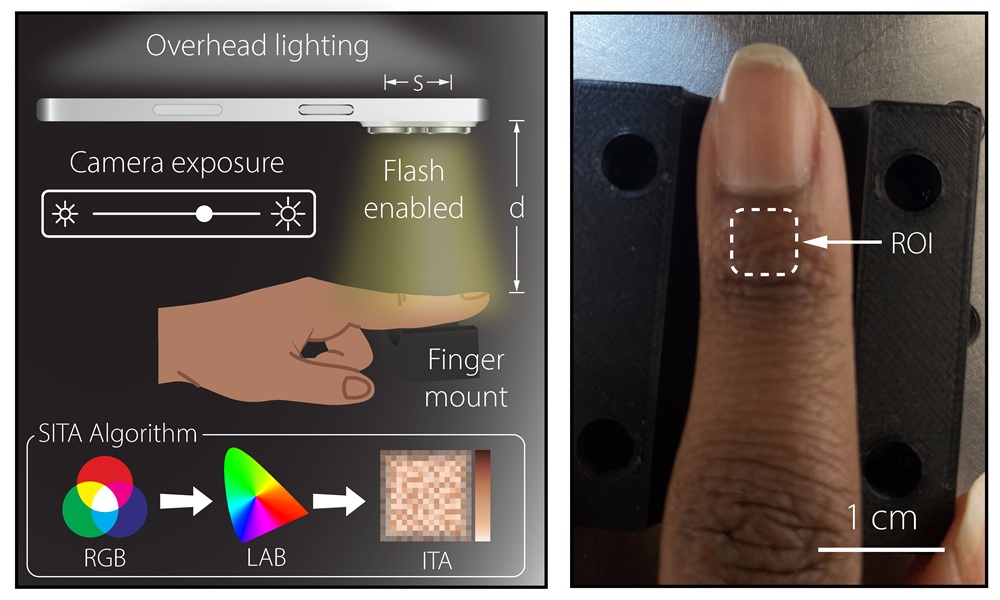
As concern grows over racial bias in common medical tools like pulse oximeters, a new study shows that smartphones may offer a simple, accessible way to help correct the problem. Researchers at Brown University and Morgan State University have developed a method for using smartphone cameras to objectively measure skin tone, a factor known to affect the accuracy of pulse oximetry — the technique that monitors oxygen levels through the skin.
Pulse oximeters are widely used in hospitals and clinics, but they have been shown to overestimate oxygen levels in people with darker skin. This can lead to missed diagnoses and delayed treatment. One key reason is that these devices often rely on light absorption through the skin, which varies depending on pigmentation. Yet, skin tone is rarely measured directly in clinical settings, and doctors often use race as a rough proxy, which can be misleading.
In this study, published in Biophotonics Discovery, the research team used smartphone cameras to capture color data from the skin at common pulse oximeter sites, like the finger. They then applied an algorithm to calculate a standardized skin-tone value called the individual typology angle (ITA). These smartphone measurements were compared to those from a professional-grade colorimeter, a device typically used for precise skin-tone readings in laboratory settings.
The results were promising: when taken under controlled lighting conditions, smartphone-based readings closely matched those from the high-end instrument. The best results came when both the camera flash and room lights were turned off, and the phone was set to a specific exposure level. Under these conditions, the method proved consistent across different skin tones and required no extra equipment beyond the phone itself.
The study highlights not only the potential of smartphones to measure skin tone more accurately and affordably, but also the need for better standards in clinical care. The authors recommend simple guidelines for using this technique in hospitals, such as avoiding measurements over tattoos or scars, turning off automatic camera features, and keeping a consistent distance from the skin.
Although the research was limited to a small group of young adults and tested outside a clinical setting, it lays the groundwork for future studies in real-world environments. If further validated, this smartphone-based approach could be an important step toward more equitable and accurate healthcare.
For details, see the original Gold Open Access article by J. A. Burrow, “Smartphone tristimulus colorimetry for skin-tone analysis at common pulse oximetry anatomical sites,” Biophoton. Discovery 2(3), 032504 (2025), doi 10.1117/1.BIOS.2.3.032504